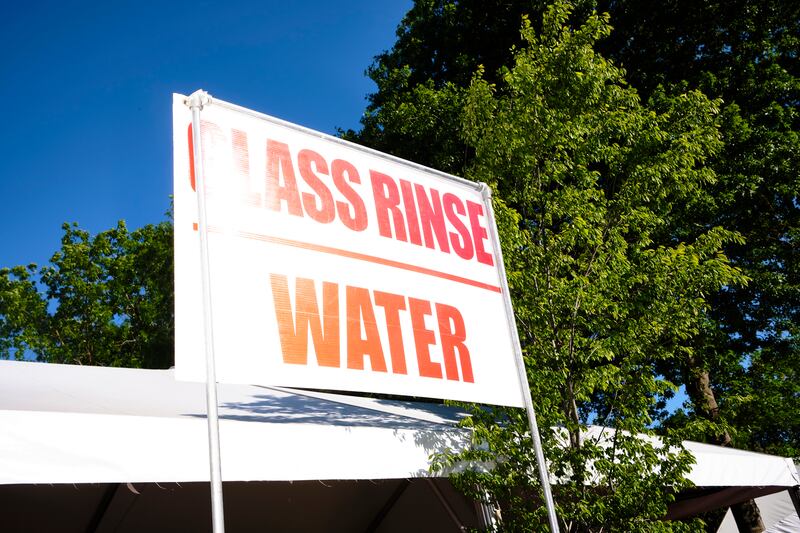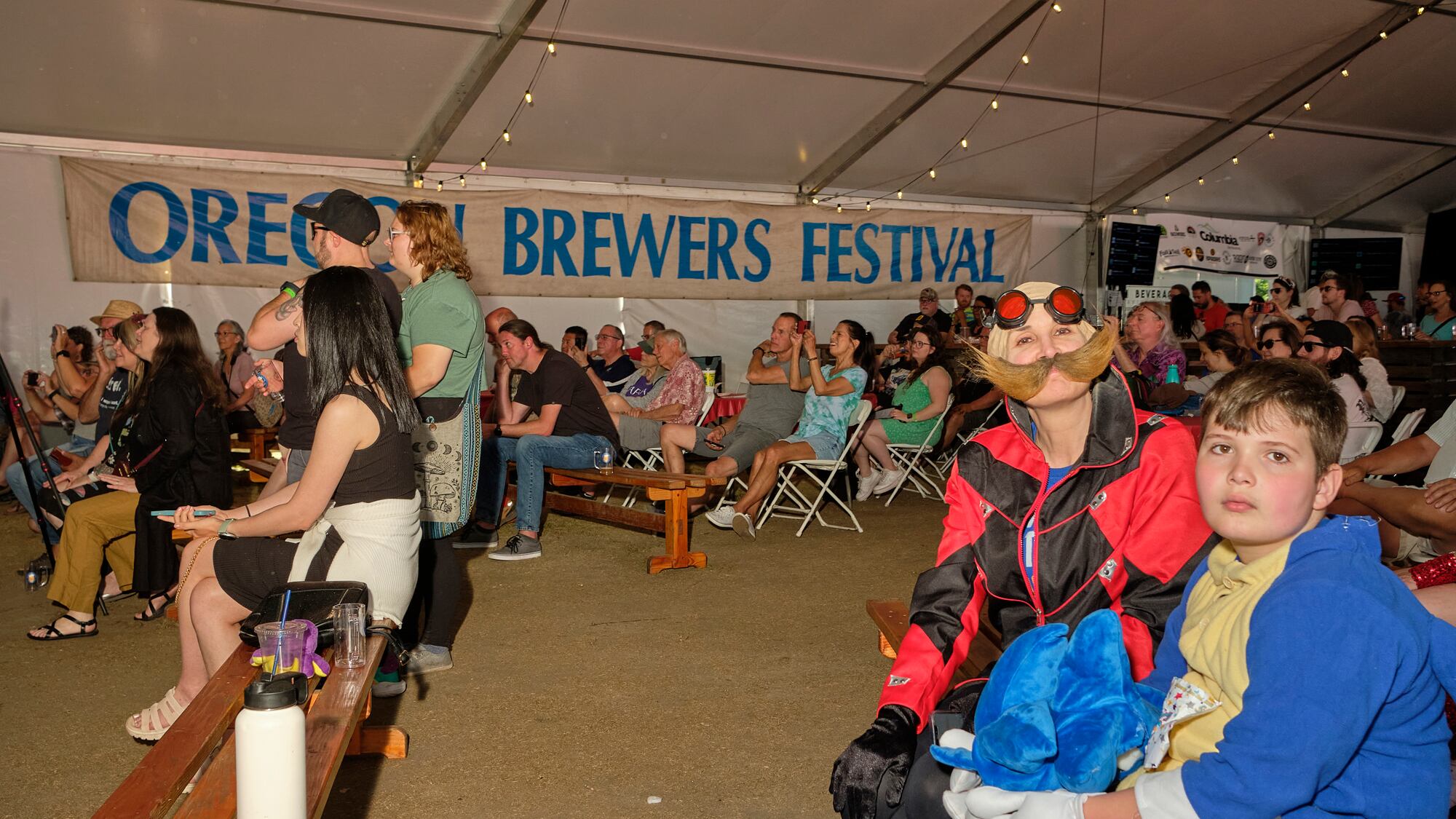For decades, anyone who considered themselves a craft beer enthusiast would block out the last full weekend of July to attend the Oregon Brewers Festival.
The event, launched in 1988 by Cascade Brewing originator and Portland Brewing co-founder Art Larrance, transformed Tom McCall Waterfront Park into a beer-soaked playground, and became one of the longest-running of its kind in the country. His Pacific Northwest take on Munich’s famed Oktoberfest drew 80,000 attendees at its peak.
The brews on hand included popular offerings readily available at many bars, but also plenty of one-offs made specifically for OBF. And there were rituals surrounding the whole affair—everything from an opening day brunch to a parade complete with a grand marshal to a ceremonial keg tapping. Festivalgoers varied in their beer geekdom—some studied the printed tap list and strategized about logistics, while others were more interested in munching on pretzel necklaces in between sips and hollering every time a keg kicked. But all were willing to cram into a hot, dusty park every July because of the beer.
The COVID-19 pandemic effectively killed OBF as we knew it. An attempted revival last July coincided with a triple-digit heat wave, making the event a literal hot mess. Six months later, the 2023 edition was scrapped.
Until it wasn’t—sort of.
OBF organizers hosted a one-weekend tap takeover June 2-4 inside CityFair, the annual Rose Festival carnival. But if the Oregon Brewers Fest was on life support in 2022, this new iteration is a sad, shambling zombie.
Right through the gates, any longtime OBF attendee would have been hit with instant nostalgia by the sight of a pair of white tents sheltering a tap trailer on one side and seating on the other. It visually resembled the fest you remember—albeit a severely scaled-down version. But the absence of the traditional beer flags, which turned the canopies’ ceilings into colorful, suds-themed patchwork quilts, gave the ruse away.
That suspicion was confirmed by the beer lineup, which didn’t appear to be carefully curated by, well, anybody, even though Larrance himself was advertised as the one who would be handpicking kegs. Of the 34 offerings on opening day, 14 were year-round core or flagship products that ranged from substandard (the Gilgamesh David’s Chair hefeweizen was completely sapped of flavor, save for an obnoxious sourlike tongue prick on the back end) to solid (Georgetown’s hit Bodhizafa continues to perform thanks to its pillowy mouthfeel and layers of flavor—big bursts of citrus that mellow into a restraining earthiness). But there was nothing special—really, nothing worth leaving your neighborhood beer bar for.

Most of the other handles poured seasonals that return every calendar year. The selection could have been dictated by whatever surplus had accumulated in the coolers back at Columbia Distributing, whose signage was displayed at each station along with the logos of some of the breweries it works with—which included every brand at the tap takeover, based on an assessment of the business’s online product list.
Essentially, the event was like stumbling on a Fred Meyer beer aisle that had been put on draft in the middle of Waterfront Park—not a terrible thing, but also not an experience worthy of a $15 admission fee to CityFair on top of the $12 price tag for the 12-ounce mug and first fill.
Which is the other aspect of OBF that was sorely missing: tasters. Part of the fun of the original event was discovering tongue-stunners as well as flops that could be joked about while queued up for the next sample. Here, you could only get $7 full pours, which means anyone who gave an unknown beer a shot but ended up with something that was bland or flat-out bad would either be forced to chug and bear it or dump it and be out the price of a proper pint. (OBF tap takeover-bound drinkers would have been better off getting 16-ounce servings just two blocks away at Lord of the Rings-themed Treebeard’s Taphouse, which consistently has a far more exciting beer menu.)
If OBF ever returns to the premier occasion it once was, organizers must put an emphasis on thoughtful keg selection. Before COVID, the beer festival market was thoroughly saturated, so it’s understandable that some events were never revived. Those that returned tended to focus on a theme (at Fort George’s Festival of the Dark Arts, it’s stouts and the occult, while you’ll find nothing but highly seasonal concoctions made with farm-fresh cones at the Hood River Hops Fest). That allows for hyperfocus on a particular style, adjunct, or time of year—which should result in an interesting and discerning tap list rather than a seemingly random amalgamation.
A good beer festival, or tap takeover for that matter, should serve brews that are a little different, a little weird, or both—not kegs that you can find at virtually any bar or grocery store in the metro area. If organizers can’t manage to do that, then the Oregon Brewers Festival is officially dead. And if that’s the case, at least let it rest in peace, for God’s sake.
UPDATE: The Oregon Brewers Festival announced June 6 that it would extend its CityFair tap takeover one more weekend, June 9-11. Drink with caution.

